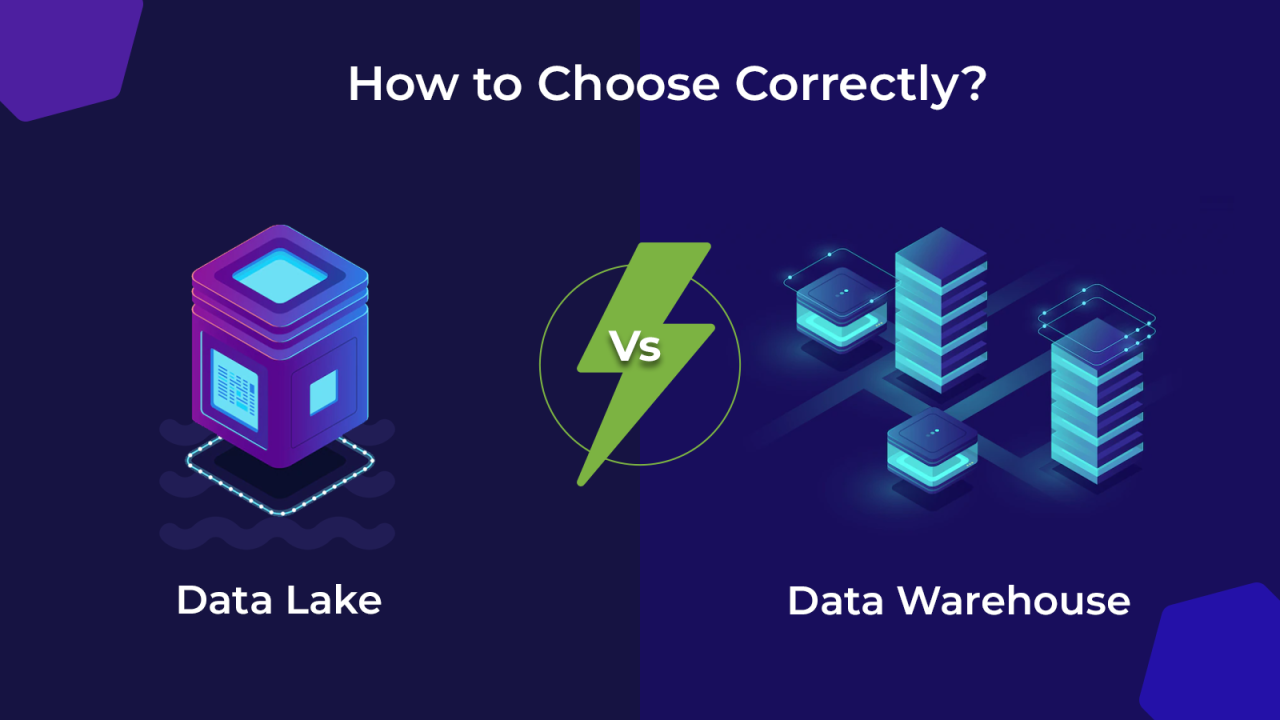In the rapidly expanding realm of cloud computing, where resources are provisioned at the click of a button and usage can scale limitlessly, the challenge of managing costs has grown exponentially. Enterprises, eager to leverage the agility and innovation of the cloud, often find themselves grappling with unpredictable and escalating expenditures. This is precisely where FinOps emerges as a critical discipline. FinOps, short for Cloud Financial Operations, is a cultural practice that brings financial accountability to the variable spend model of cloud, empowering organizations to make data-driven decisions that optimize cloud costs while maximizing business value. It’s about breaking down traditional silos between finance, engineering, and operations teams, fostering a collaborative mindset where everyone takes ownership of cloud spend. This isn’t just about cost-cutting; it’s a strategic approach to continuous financial management in the cloud, truly optimizing resource costs for sustainable growth.
The Evolution of Cloud Spending: From Predictable to Dynamic
To fully grasp the necessity and revolutionary nature of FinOps, it’s crucial to understand the fundamental shift in IT spending that cloud computing introduced, moving away from a traditional, predictable model.
A. The Predictable World of On-Premise IT Costs
For decades, IT spending was largely a predictable, capital expenditure (CapEx) model, managed by traditional finance and IT departments.
- Capital Expenditure (CapEx) Focus: Organizations invested heavily upfront in purchasing physical servers, networking equipment, software licenses, and building data centers. These were large, infrequent outlays depreciated over years.
- Fixed Costs and Budgeting: Once purchased, the costs were relatively fixed, making budgeting straightforward. IT departments estimated capacity needs well in advance, leading to deliberate procurement cycles.
- Underutilization and Waste: A common issue was over-provisioning. To avoid future bottlenecks, organizations often bought more hardware than immediately needed, leading to significant portions of expensive infrastructure sitting idle or underutilized. This latent waste was hidden within the CapEx model.
- Siloed Accountability: Finance controlled the budget, and IT purchased and managed the assets. The direct link between IT operational decisions and ongoing costs was less transparent and less immediate.
B. The Rise of Cloud Computing: Unpredictable Operational Spend
Cloud computing fundamentally altered this financial landscape, shifting spending from CapEx to a dynamic, operational expenditure (OpEx) model.
- Operational Expenditure (OpEx) Model: Instead of large upfront investments, organizations pay cloud providers on a pay-as-you-go basis for resources consumed (compute, storage, network bandwidth). This shifts costs from capital budgets to operational budgets.
- Instant Elasticity and Scale: The cloud offers unparalleled agility. Resources can be provisioned and de-provisioned in minutes, scaling up or down with demand. This instant elasticity is a core business advantage.
- Unpredictable Costs: While flexible, this pay-as-you-go model can lead to unpredictable and rapidly escalating costs if not managed effectively. Without controls, engineers can spin up resources quickly, and these resources continue to accrue costs, often unnoticed.
- Lack of Centralized Visibility: In large organizations with many teams using different cloud services across multiple projects, gaining a consolidated view of cloud spend becomes incredibly challenging. Costs can accrue in various departments without clear attribution.
- Engineering Autonomy and Cost Implications: DevOps methodologies empower engineering teams to rapidly deploy and manage infrastructure. While beneficial for speed, this autonomy, without financial awareness, can inadvertently lead to over-provisioning or inefficient resource usage, driving up costs.
- Disjointed Incentives: Engineers are often incentivized by speed, reliability, and innovation, not necessarily by cost optimization. Finance teams focus on budget control but lack the technical context to understand cloud usage. Operations manage infrastructure but may not see the direct financial impact of their decisions.
This new, dynamic spending model exposed a critical gap: the lack of a disciplined approach to managing the financial aspects of cloud consumption, leading directly to the necessity for FinOps.
Core Principles of the FinOps Framework
FinOps is more than just a set of tools; it’s a cultural and operational framework built upon key principles that aim to bring financial accountability and efficiency to cloud spending.
A. Collaboration: Bridging Silos
At its heart, FinOps is about collaboration. It emphasizes breaking down the traditional silos between finance, engineering, and operations teams (often called ‘Cloud Ops’ or ‘Cloud Engineering’).
- Shared Goals: All teams share the common goal of optimizing cloud value – which means balancing cost, speed, and quality. Everyone understands that optimizing cloud spend benefits the entire organization.
- Mutual Understanding: Finance teams gain a better understanding of cloud technology and its variable cost drivers, while engineering and operations teams gain financial literacy and awareness of budget impacts.
- Joint Decision-Making: Decisions about cloud architecture, resource provisioning, and optimization are made collaboratively, with input from all three functions, ensuring both technical excellence and financial prudence.
- Centralized FinOps Team: Often, a dedicated FinOps team or practitioner acts as a facilitator, bringing these disparate teams together, providing visibility, and driving the cultural change.
B. Data-Driven Decision Making
FinOps heavily relies on data and analytics to inform decisions about cloud spending and optimization.
- Cost Visibility and Allocation: Gaining granular visibility into cloud spending across accounts, projects, and departments. This involves robust tagging strategies (e.g., using tags for cost centers, applications, teams) to allocate costs accurately to their rightful owners.
- Performance and Cost Metrics: Analyzing key metrics related to resource utilization (e.g., CPU utilization, memory usage, network traffic) alongside their associated costs to identify inefficiencies and opportunities for optimization.
- Forecasting and Budgeting: Using historical data and projected usage to create accurate cloud forecasts and budgets, allowing for proactive financial planning.
- Trend Analysis: Identifying spending trends, anomaly detection, and understanding the root causes of cost changes to make informed decisions.
C. Centralized Cloud Cost Management
A key principle involves establishing a centralized function or platform for managing all cloud costs.
- Single Source of Truth: Consolidating cloud billing data from various providers (AWS, Azure, Google Cloud) into a single, unified view.
- Cost Governance: Implementing policies and guardrails to ensure that cloud usage aligns with financial best practices and budget constraints.
- Chargeback/Showback: Implementing mechanisms to allocate or show cloud costs back to the consuming teams or business units, creating financial accountability and awareness. Showback simply displays the cost, while chargeback formally allocates it to a department’s budget.
- Tools and Platforms: Leveraging cloud provider cost management tools (e.g., AWS Cost Explorer, Azure Cost Management) and third-party FinOps platforms (e.g., CloudHealth, Apptio Cloudability, Finout) to automate reporting and analysis.
D. Cloud Optimization: Continuous and Iterative
FinOps is not a one-time project but a continuous, iterative process of optimization, adapting to changing business needs and cloud capabilities.
- Right-Sizing: Continuously reviewing and adjusting the size of compute instances (VMs, containers, serverless functions) and storage tiers to precisely match workload requirements, avoiding over-provisioning.
- Waste Identification and Remediation: Identifying and terminating unused or idle resources (e.g., orphaned volumes, unattached IPs, stopped instances).
- Commitment-Based Discounts: Strategically utilizing long-term commitment discounts offered by cloud providers (e.g., AWS Reserved Instances, EC2 Savings Plans, Azure Reserved VM Instances) for stable, predictable workloads.
- Spot Instances: Leveraging highly cost-effective but interruptible spot instances for fault-tolerant or flexible workloads.
- Architectural Optimization: Designing applications to be cloud-native, leveraging serverless, containers, and managed services that inherently offer better scalability and cost efficiency.
- Automation of Optimization: Implementing automation to identify and apply optimization recommendations (e.g., auto-scaling policies, scheduled instance shutdowns).
E. Value-Driven Approach
FinOps moves beyond mere cost-cutting to focus on maximizing the business value derived from cloud investments.
- Balancing Cost, Speed, and Quality: Decisions are made by balancing cost savings against performance, reliability, and time-to-market. Sometimes, spending more money on cloud resources can deliver significantly more business value (e.g., faster feature delivery, higher availability during peak demand).
- Unit Economics: Understanding the cost per unit of business value (e.g., cost per customer, cost per transaction, cost per active user) to ensure cloud spending scales efficiently with business growth.
- Just-in-Time Provisioning: Leveraging cloud elasticity to provision resources only when needed and de-provision them when not in use, ensuring efficient utilization.
Key Processes Within the FinOps Lifecycle
FinOps is often described as a continuous loop, cycling through phases of Inform, Optimize, and Operate.
A. Inform Phase: Gaining Visibility and Understanding
This initial phase is about collecting data, gaining visibility into cloud spending, and distributing information to relevant stakeholders.
- Data Ingestion and Normalization: Gathering raw billing and usage data from various cloud providers (e.g., AWS Cost and Usage Reports, Azure Consumption + Usage data, Google Cloud Billing Exports) and normalizing it into a consistent format.
- Cost Allocation and Tagging: Implementing a robust tagging strategy (e.g., app-name, cost-center, owner, environment) and ensuring its consistent application across all resources. This allows for accurate cost attribution. Tools for tag governance and enforcement are crucial.
- Reporting and Dashboards: Creating clear, intuitive dashboards and reports that visualize cloud spend, breaking it down by service, team, project, and environment. These reports should highlight key cost drivers and trends.
- Anomaly Detection: Setting up automated alerts to detect sudden, unexplained spikes in spending or deviations from expected patterns, allowing for quick investigation.
- Cost Showback/Chargeback: Presenting cost data back to engineering teams (showback) to foster accountability, or formally allocating costs to specific departments (chargeback).
B. Optimize Phase: Identifying and Implementing Savings
Once visibility is established, the focus shifts to actively identifying and implementing cost-saving opportunities.
- Right-Sizing Recommendations: Analyzing resource utilization data to recommend downsizing or rightsizing instances (e.g., moving from a large VM to a smaller one that still meets performance needs) or leveraging burstable instances.
- Waste Elimination: Identifying and decommissioning idle or underutilized resources (e.g., unattached storage volumes, unused load balancers, old snapshots). This often involves automated clean-up scripts.
- Commitment-Based Savings (RI/Savings Plans): Strategically purchasing Reserved Instances (RIs) or Savings Plans for predictable, long-running workloads, leveraging significant discounts. This requires collaboration between finance (for upfront investment) and engineering (for stable usage patterns).
- Leveraging Spot Instances: For fault-tolerant or flexible workloads (e.g., batch processing, dev/test environments), utilizing highly discounted spot instances, which can offer up to 90% savings compared to on-demand.
- Architectural Optimization: Collaborating with engineering to redesign applications or components to be more cloud-native, leveraging serverless functions, managed services, or more efficient storage tiers. This is often the most impactful long-term optimization.
- Automation of Optimization: Building automation to implement right-sizing, waste clean-up, or even commitment purchasing recommendations.
C. Operate Phase: Monitoring and Continuous Improvement
This final phase focuses on maintaining the optimized state, embedding FinOps practices into daily operations, and continuously seeking further improvements.
- Policy Enforcement: Implementing automated policies and guardrails (e.g., using Infrastructure as Code (IaC) security scanners, cloud governance tools) to prevent cost inefficiencies (e.g., restrict creation of overly expensive instances, enforce tagging).
- Anomaly Response: Establishing processes for rapid investigation and remediation of detected cost anomalies, ensuring that unexpected spend spikes are addressed quickly.
- Budget Monitoring and Alerts: Continuously tracking spend against established budgets and sending automated alerts when spending approaches predefined thresholds.
- Continuous Optimization: Regularly reviewing optimization recommendations, evaluating the effectiveness of implemented changes, and adapting strategies based on evolving business needs and cloud provider offerings. FinOps is never truly ‘done.’
- Forecasting Refinement: Continuously refining cloud forecasts based on actual spending and projected business growth, making budgeting more accurate.
Key Enablers and Drivers for FinOps Adoption
The surge in FinOps adoption is not coincidental; it’s driven by several powerful trends and pressing organizational needs in the cloud era.
A. Rapidly Escalating Cloud Costs
The primary driver is often the shocking realization that cloud bills are spiraling out of control. Without proper management, the ease of provisioning leads to unoptimized spending, making FinOps a necessity for financial sustainability.
B. Decentralized Cloud Spending
The adoption of DevOps and engineering autonomy, while beneficial for agility, often leads to decentralized cloud spending across numerous teams and projects. FinOps provides the framework to bring order and accountability to this distributed spend.
C. Increased Cloud Maturity
As organizations move beyond initial cloud experimentation to running mission-critical applications in the cloud, the strategic importance of cost optimization and financial governance becomes paramount. FinOps represents a natural evolution of cloud maturity.
D. Economic Volatility and Efficiency Imperatives
In periods of economic uncertainty or slowdowns, businesses face increased pressure to reduce costs and maximize efficiency. FinOps provides the tools and processes to achieve significant savings and demonstrate value from cloud investments.
E. Multi-Cloud and Hybrid Cloud Strategies
Many enterprises operate in multi-cloud (using multiple public cloud providers) or hybrid cloud (combining public cloud with on-premises infrastructure) environments. Managing costs across these disparate environments adds complexity, making a unified FinOps approach essential for consolidated visibility and optimization.
F. Regulatory Compliance and Governance
While primarily a cost discipline, FinOps practices (like robust tagging and cost attribution) also support regulatory compliance and internal governance by providing clear audit trails and accountability for cloud resource usage.
G. Shift to Cloud-Native Architectures
The adoption of cloud-native patterns like microservices, containers (Kubernetes), and serverless functions, while often more cost-efficient at scale, requires a nuanced understanding of their specific cost drivers, which FinOps helps to demystify and optimize.
H. Availability of Advanced FinOps Tools
The maturation of cloud provider cost management tools and the emergence of sophisticated third-party FinOps platforms have made it easier for organizations to implement FinOps practices at scale, providing the necessary data aggregation, analysis, and automation capabilities.
Challenges and Considerations in Implementing FinOps
While the benefits of FinOps are clear, its implementation is a journey that comes with its own set of challenges, often requiring significant cultural and technical shifts.
A. Cultural Resistance and Mindset Shift
The biggest challenge is often not technical, but cultural. Bridging the gap between finance (cost control, predictability) and engineering (speed, innovation) requires overcoming deep-seated departmental silos, fostering mutual understanding, and aligning incentives. Engineers might resist ‘budget police,’ while finance might struggle with the variable nature of cloud costs.
B. Granular Data Visibility and Attribution
Achieving truly granular cost visibility requires a disciplined and consistent tagging strategy across all cloud resources. This is often difficult to enforce, especially in large, decentralized organizations, leading to ‘untaggable’ resources and fuzzy cost attribution. Poor tagging can render FinOps efforts ineffective.
C. Tooling Landscape Complexity
The FinOps tooling landscape is complex, encompassing cloud provider native tools, third-party FinOps platforms, custom scripts, and integration with existing IT Service Management (ITSM) and Enterprise Resource Planning (ERP) systems. Selecting the right tools and ensuring seamless integration requires significant expertise and ongoing management.
D. Skill Gap and Talent Shortage
FinOps requires a blend of financial acumen, cloud engineering knowledge, and data analysis skills. Finding individuals or building teams with this diverse skillset is challenging. Existing finance teams may lack cloud expertise, and engineers may lack financial literacy, necessitating significant training and upskilling.
E. Balancing Cost, Speed, and Performance
FinOps is about optimization, not just cost-cutting. The challenge lies in finding the right balance between cost efficiency and business value (speed, performance, reliability, security). Over-optimizing for cost can negatively impact application performance or developer velocity, while prioritizing speed without cost awareness can lead to waste.
F. Managing Commitment-Based Savings (RIs/Savings Plans)
Strategically purchasing Reserved Instances or Savings Plans requires accurate forecasting of future cloud usage and careful management of these commitments. Miscalculating needs can lead to ‘stranded’ RIs (paying for capacity you don’t use) or missing out on significant savings. This requires ongoing monitoring and adjustments.
G. Cloud Provider Complexity
Each major cloud provider (AWS, Azure, Google Cloud) has its own unique pricing models, discount mechanisms, and cost management tools. Managing FinOps effectively in a multi-cloud environment adds another layer of complexity, requiring expertise across multiple platforms.
H. Proving ROI and Demonstrating Value
While FinOps generates clear cost savings, proving the broader ROI (e.g., how much financial value was created by enabling faster feature delivery or preventing an outage through better resource management) can be challenging. Developing clear metrics and effectively communicating value to senior leadership is crucial for sustained investment.
Best Practices for Successfully Implementing FinOps
To maximize the benefits of FinOps and navigate its complexities, organizations should adopt a strategic, collaborative, and data-driven approach, embedding financial accountability into their cloud operations.
A. Cultivate a Culture of Collaboration and Shared Ownership
This is the most critical success factor. Break down organizational silos by creating a dedicated FinOps team or designating FinOps practitioners who act as bridges between finance, engineering, and operations. Foster regular meetings and open communication channels where all teams share data, discuss trade-offs, and align on shared goals. Emphasize that cloud cost optimization is everyone’s responsibility, not just finance’s.
B. Implement a Robust Cloud Cost Visibility and Allocation Strategy
Start by gaining granular visibility.
- Mandatory Tagging: Enforce a strict and consistent tagging policy across all cloud resources from the outset (e.g.,
application:frontend,cost-center:marketing,owner:john.doe,environment:prod). Use automation to enforce tagging and identify untagged resources. - Centralized Billing Data: Aggregate billing data from all cloud providers into a single platform or data warehouse for unified reporting and analysis.
- Cost Showback/Chargeback: Implement showback dashboards for engineering teams to see their consumption and associated costs, fostering awareness. Progress to chargeback models where appropriate to formally allocate costs to business units.
C. Optimize Early and Continuously (Right-Sizing, Waste Elimination)
Optimization is an ongoing process.
- Automated Rightsizing: Leverage cloud provider tools or third-party platforms to continuously analyze resource utilization (CPU, memory, network) and recommend rightsizing (downgrading instances or moving to more efficient types) for underutilized resources. Automate this where safe.
- Identify and Eliminate Waste: Regularly scan for and automatically decommission idle or unused resources (e.g., unattached storage volumes, old snapshots, stopped instances).
- Scheduled Shutdowns: Implement automated schedules to shut down non-production environments (dev, test, staging) during off-hours, significantly reducing costs.
- Leverage Native Cloud Features: Design applications to use inherently cost-efficient cloud-native services (e.g., serverless functions for intermittent workloads, object storage for static files, managed databases).
D. Strategically Manage Commitment-Based Discounts (RIs/Savings Plans)
For stable and predictable workloads, leverage Reserved Instances (RIs) or Savings Plans.
- Accurate Forecasting: Develop robust forecasting models to predict steady-state cloud usage.
- Centralized Management: Have a centralized FinOps team or function manage the purchasing and optimization of RIs/Savings Plans, ensuring coverage aligns with actual usage and avoiding ‘stranded’ commitments.
- RI Marketplace/Exchanges: Utilize options to sell unused RIs or exchange them for different types where supported by the cloud provider.
E. Implement FinOps Governance and Policy Automation
Establish clear rules and guardrails for cloud consumption.
- Policy as Code: Define policies (e.g., limits on instance types, mandatory tagging, security configurations) in code and enforce them automatically through Infrastructure as Code (IaC) pipelines and cloud governance tools.
- Budget Alerts: Set up automated alerts to notify teams when their cloud spend approaches predefined budget thresholds.
- Cost Anomalies Detection: Implement anomaly detection systems to quickly identify and investigate unexpected spikes in spending.
F. Build a Strong FinOps Team and Upskill Talent
Invest in developing FinOps capabilities within your organization.
- Cross-Functional Talent: Hire or train individuals who possess a blend of financial acumen, technical cloud knowledge, and data analysis skills.
- Continuous Learning: Provide ongoing training for engineers on cloud cost optimization techniques and financial literacy, and for finance teams on cloud services and billing models.
- Dedicated FinOps Role: Consider establishing a dedicated FinOps lead or team to drive the initiative, provide expertise, and foster collaboration.
G. Optimize Cloud Architecture for Cost Efficiency
Beyond resource rightsizing, actively design applications to be cloud-cost efficient from the ground up.
- Serverless First: For appropriate workloads, prioritize serverless architectures to pay only for execution time.
- Containerization: Use containers with orchestrators like Kubernetes to maximize resource utilization across shared compute pools.
- Data Tiering: Implement strategies to move less frequently accessed data to cheaper storage tiers (e.g., object storage, archival storage).
- Optimized Networking: Design network topologies to minimize cross-region data transfer costs, which can be significant.
H. Leverage External FinOps Expertise and Tools
Don’t reinvent the wheel.
- Third-Party FinOps Platforms: Utilize specialized FinOps platforms that offer advanced features for cost visibility, optimization recommendations, anomaly detection, and reporting across multiple cloud providers.
- Consulting Services: Engage FinOps consultants to jumpstart initiatives, conduct cloud cost assessments, or provide specialized training.
I. Communicate Value and Celebrate Success
Regularly communicate the impact of FinOps efforts to all stakeholders, from engineering teams to senior leadership. Highlight cost savings, improved efficiency, and the business value unlocked. Celebrate successes to reinforce positive behavior and demonstrate the tangible benefits of collaboration and cost ownership.
J. Integrate with Existing Enterprise Systems
For a holistic view, integrate FinOps data and processes with your existing Enterprise Resource Planning (ERP) systems, financial planning software, and IT Service Management (ITSM) tools. This ensures consistency in financial reporting and facilitates automated chargeback.
The Future Trajectory of FinOps: Beyond Optimization
FinOps is rapidly evolving, moving beyond just cost optimization to become a strategic discipline that drives even greater business value from cloud investments.
A. FinOps as a Standard Operational Discipline
FinOps will mature into a standard, embedded operational discipline within most cloud-first organizations, similar to DevOps or SRE (Site Reliability Engineering). It will become a core competency for cloud engineering, finance, and product teams, not just a specialized function.
B. Deeper AI and Machine Learning Integration
The role of AI and Machine Learning in FinOps will become even more profound.
- Autonomous Optimization: AI will move beyond recommendations to autonomously implement certain optimization actions (e.g., auto-rightsizing, waste clean-up, dynamic commitment adjustments) within defined guardrails.
- Predictive Costing: More accurate and granular AI-driven forecasting that predicts future costs based on highly complex variables (e.g., new feature releases, market trends, user growth).
- Anomaly Root Cause Analysis: AI will not just detect anomalies but will automatically pinpoint their root causes, accelerating remediation.
- Generative AI for Spend Analysis: AI that can process natural language queries about cloud spend and generate detailed reports or insights.
C. Advanced Unit Economics and Business Value Alignment
FinOps will increasingly focus on sophisticated unit economics and direct alignment with business value.
- Cost Per Business Metric: Deeper understanding and optimization of cost per specific business metric (e.g., cost per processed loan, cost per delivered package, cost per active user session), allowing for direct comparisons of efficiency across different product lines or features.
- Real-time Value Realization: Tools that provide real-time dashboards showing the direct correlation between cloud spend and tangible business outcomes, enabling immediate decision-making for optimal value creation.
D. Policy-Driven FinOps and Governance Automation
The concept of “Policy as Code” will become even more central to FinOps, with comprehensive governance automation.
- Continuous Policy Enforcement: Automated policies will continuously monitor and enforce cost-related rules across the entire cloud estate, preventing budget overruns and non-compliant resource provisioning in real time.
- Compliance-as-Code for FinOps: Codifying financial compliance requirements and automatically auditing against them.
- Proactive Risk Management: Policies that flag or prevent deployments that could lead to unforeseen cost escalations based on architectural patterns.
E. FinOps in Edge, Hybrid, and Multi-Cloud Environments
As cloud strategies become more distributed and complex, FinOps will extend its reach.
- Edge FinOps: Managing costs associated with compute and data at the edge, optimizing resource allocation for distributed IoT and AI workloads.
- Unified Hybrid/Multi-Cloud Views: FinOps platforms will offer increasingly sophisticated, unified views and optimization capabilities across disparate public cloud providers and on-premises infrastructure.
F. Integration with Broader Enterprise Financial Systems
FinOps will become more deeply embedded into the broader enterprise financial ecosystem.
- Direct ERP Integration: Seamless, automated integration with Enterprise Resource Planning (ERP) and financial planning and analysis (FP&A) systems for consolidated reporting and budgeting.
- Automated Chargeback/Showback: Fully automated, granular chargeback mechanisms that directly link cloud spend to departmental budgets without manual intervention.
G. Sustainability and Green FinOps
A growing trend will be the integration of sustainability metrics into FinOps.
- Carbon Cost Optimization: Measuring and optimizing the carbon footprint associated with cloud usage alongside financial costs, encouraging the use of greener cloud regions and more energy-efficient services.
- Resource Waste as Environmental Waste: Framing waste identification not just as financial loss but as environmental burden, driving more responsible cloud consumption.
Conclusion
FinOps is no longer a niche concern for IT departments; it is a vital, strategic discipline for any organization leveraging the cloud. By bringing the principles of financial accountability, collaboration, and continuous optimization to the dynamic world of cloud spending, FinOps empowers enterprises to move beyond unpredictable expenses to truly optimize resource costs while simultaneously maximizing business value. It bridges the critical gap between engineering agility and financial prudence, fostering a shared understanding and ownership of cloud spend across development, operations, and finance teams.
While the journey to FinOps maturity presents its own set of challenges—from cultural shifts and data complexities to talent development and tool integration—the undeniable benefits in terms of cost efficiency, predictability, and strategic alignment are too compelling to ignore. The future of FinOps is one of increasing automation, deeper AI integration, hyper-granular unit economics, and seamless integration with broader enterprise systems. By embracing these evolving trends and committing to the core principles of FinOps, organizations can ensure their cloud investments not only fuel innovation and agility but also drive sustainable, profitable global growth, effectively unveiling the true power of financial operations in the cloud.














